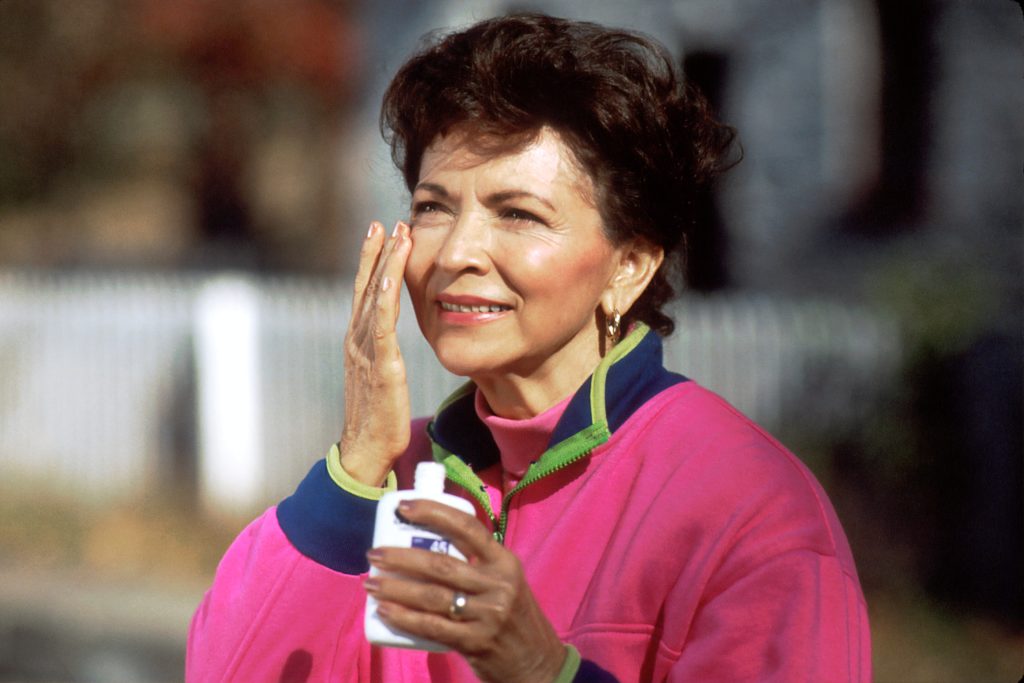Did you know that as we age, we become less cautious about the effects of the sun on our skin and bodies? Many seniors think that since they haven’t gotten skin cancer yet, they won’t, and that it can take decades to develop.
Mickey Mantle, the famous baseball player, died of cancer at the age of 63 and is often quoted as saying: If I knew I was going to live this long, I’d have taken better care of myself.” No matter what age we are, we need to protect our skin from the harmful UV rays of the sun.
Americans who live to the age of 65 have a 40-50% chance of developing skin cancer at least once in their lifetime. Caucasian men over age 65 have had a 5.1 percent annual increase in melanoma incidence since 1975—the highest annual increase of any gender or age group. Most skin cancers don’t develop spontaneously, they are a result from sun damage over the course of our lives, so it makes sense that seniors, who have lived longer, have the most sun exposure and damage from UV light.
Did you know that suffering from just 5 sunburns over your lifetime more than doubles your chances of developing melanoma? Each additional sunburn adds to that risk. While doctors and scientists don’t know exactly how much damage will trigger skin cancer, studies have shown that a bad burn at an older age could be the tipping point.
As we age, our skin ages and weakens as well – becoming thinner and less able to protect itself from the environment. Since it covers the entire surface of the body, it’s the first organ to come into direct contact with UV rays. Research has shown that the majority of substantial UV exposure actually occurs after age 40 and is often what triggers the skin cancer. So UV protection at every age is vital.
July is UV Safety Awareness Month, so it’s a good time to reduce the risk of skin cancer and stay safe in the summer sun.
The sun releases different types of UV rays: UVB, UVA, and UVC. The Earth’s ozone layer absorbs all UVC rays, and many (but not all!) UVB rays. Exposure to UVB rays can cause visible effects: Sunburn, suntan, brown spots, wrinkles, and skin cancer.
As the Earth’s ozone layer is depleted by man-made chemicals and natural gases, it provides less protection from UVB rays, which is why it’s increasingly important to wear a sunscreen of at least SPF30 whenever you or a loved one is outdoors.
The sun’s UVA rays could be considered invisible killers. These rays seep through some forms of glass and can cause wrinkles, brown spots, and skin cancer without feeling warm or causing sunburn.
If you or an aging loved one is taking a long car ride or enjoys sitting by the window in the mid-day sun, make sure sunscreen is applied on the face, hands, and arms.
What other UV tips can you follow?
Stay Indoors When the Sun Is Brightest – typically between the hours of 10 am and 4 pm during the peak of the summer.
Wear sun-safe clothing. This includes a long-sleeved shirt and long pants made of densely woven materials, a wide-brimmed hat, and UV-filtering sunglasses.
Always Wear SPF 30 and Reapply Frequently – Whether it’s winter or summer, indoors or out, the sun’s rays can wreak havoc on your loved one’s skin – and health! Always apply SPF 30 on all exposed body parts and reapply every two hours. More often if you are in the water or working up a sweat.
See a Dermatologist Regularly – Skin cancers like basal cell carcinoma (BCC) and squamous cell carcinoma (SCC) are found nearly exclusively in older adults. Malignant melanoma occurs 10 times more frequently in older adults than in those under 40. See a dermatologist annually for a complete exam. In between visits, keep an eye on any spots or moles. If you notice any changes, make a dermatologist appointment immediately.
Practice Sun Safety Year-Round – Since prevention is key, following these sun safety steps year-round may help reduce the risk of skin cancer for years to come.

